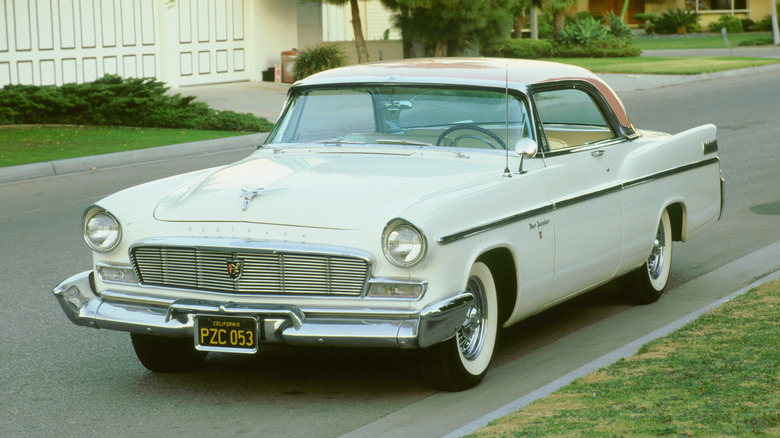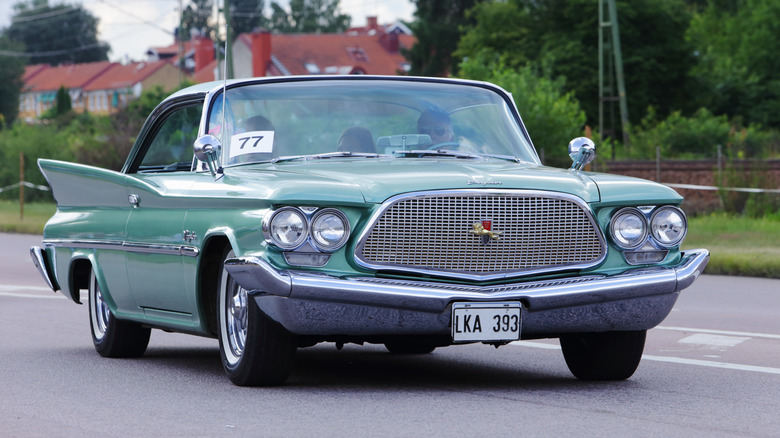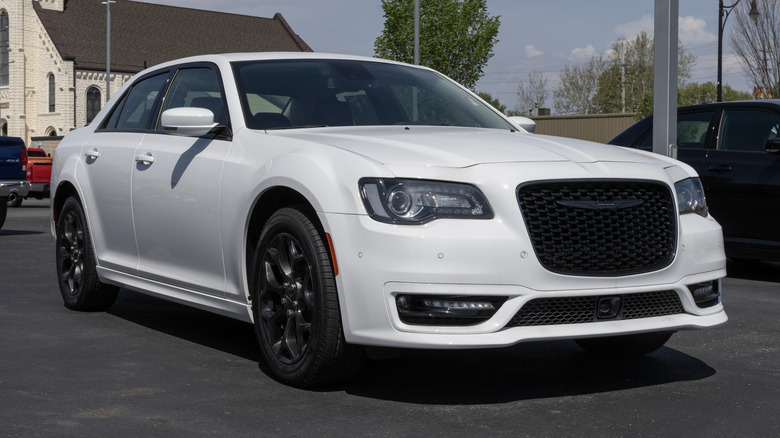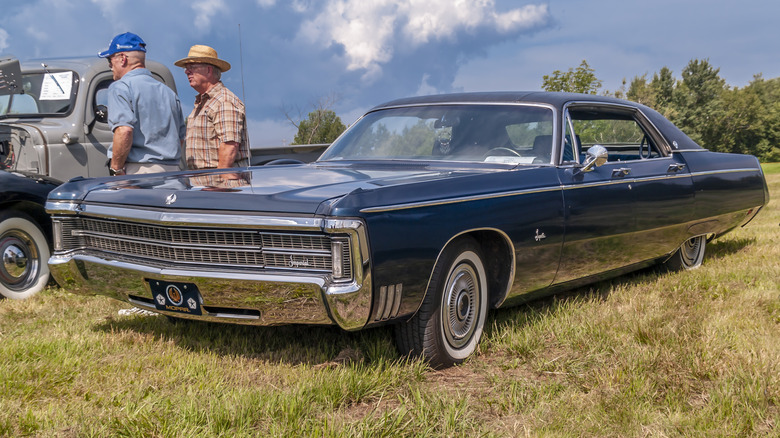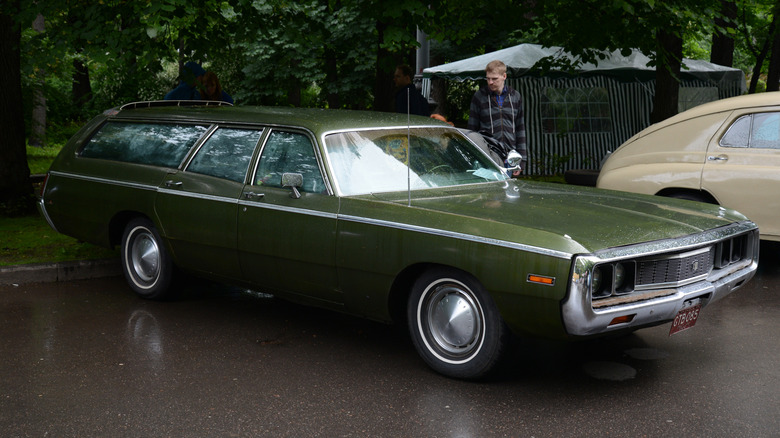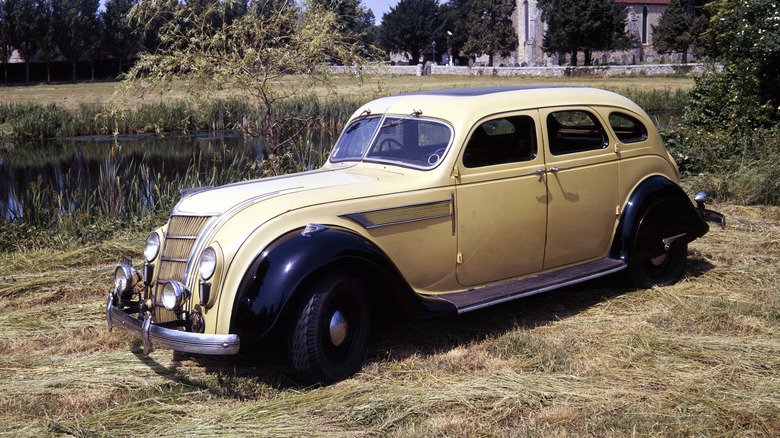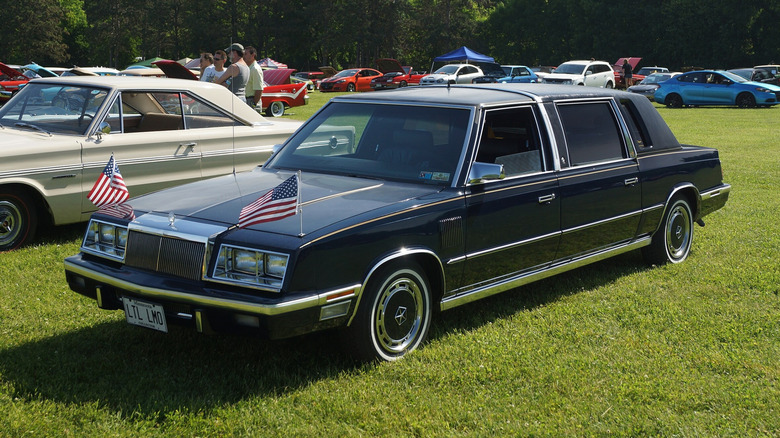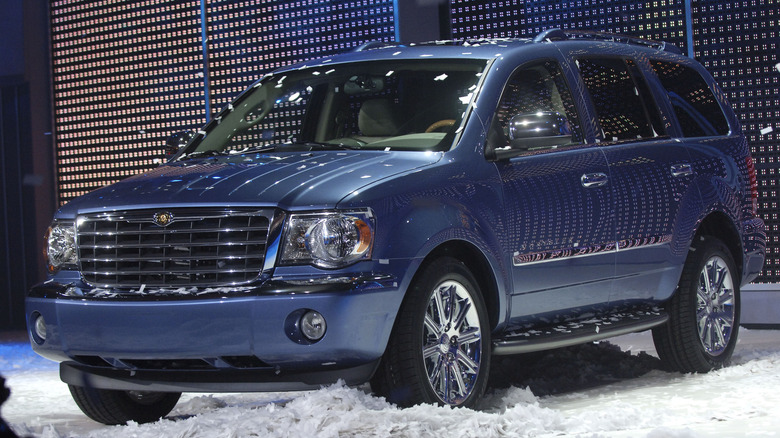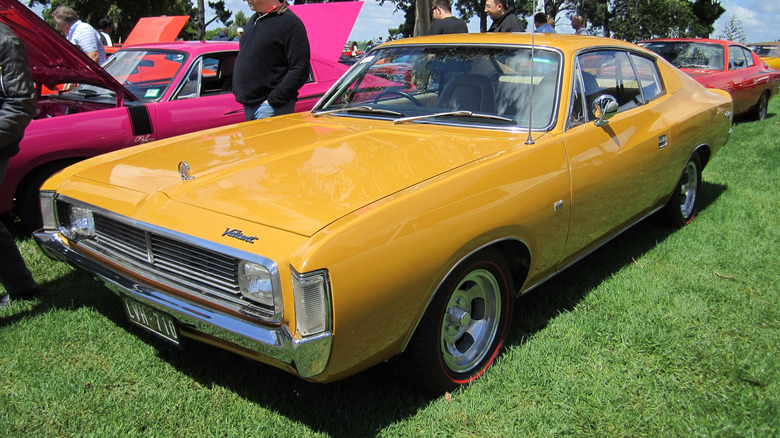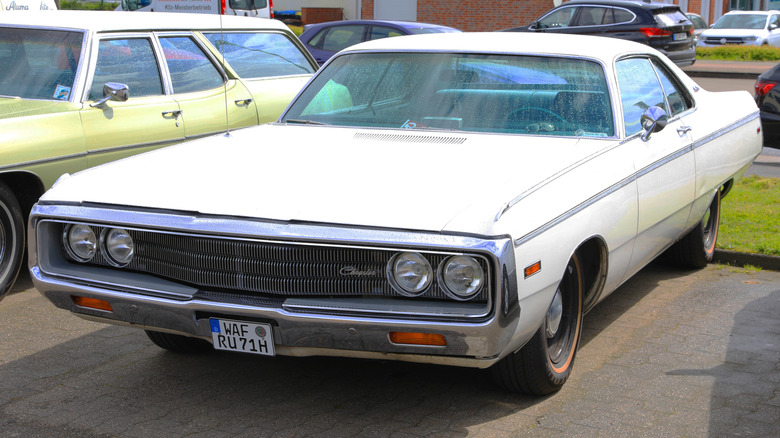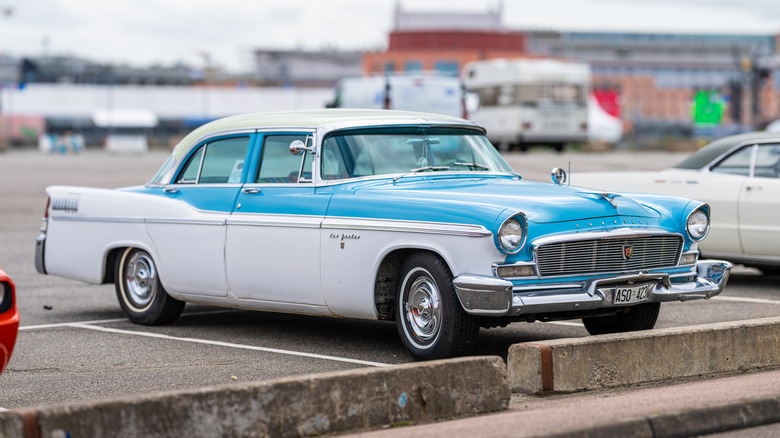10 Discontinued Chrysler Models That Deserve A Second Chance
Chrysler is in a strange spot in the automotive market right now. After its long-running sedan, the 300, was discontinued for 2024, the brand only has the Pacifica minivan in its lineup. It remains popular with buyers, but isn't enough on its own to sustain the brand for the future. The CEO of Chrysler's parent company, Stellantis, recently threatened to shut down brands that weren't profitable enough, and so it seems the pressure is on for Chrysler to show it can survive outside of the niche minivan segment.
The brand's current plan is a radical one. It aims to make all of its vehicles electrified by the end of the decade, with its original idea being to cease production of combustion engines altogether. In the face of weaker EV demand, it appears to have switched course and looks set to offer a mix of hybrids and pure EVs, although bosses have to date refused to confirm any plans for its future lineup in detail.
Amongst all this change, one thing's for certain: the Chrysler lineup of the coming years will look radically different to anything that has previously been offered in the brand's dealerships. To keep some sense of continuity throughout this change, the brand could look to resurrect one or several of its historic nameplates. It has plenty of deserving candidates to choose from, including the below models from the brand's back catalog to explore how they might be resurrected in this new era of the brand.
Chrysler Windsor
The Windsor name remains tied to modern Chrysler, despite the automaker not producing a car bearing the nameplate for over half a century. The Windsor Assembly Plant in Windsor, Ontario, Canada has been manufacturing Chrysler vehicles since it was built in 1928, and most recently, it produced the latest-generation Chrysler Pacifica minivan. However, the model reportedly took its name from the house of King George VI rather than the Canadian city in which the plant operates. As of this writing, the plant is undergoing retooling to enable it to build EVs as part of parent company Stellantis' plan to transform its lineup over the next decade.
Building a new car with the nameplate could be pitched as a way to honor the plant's history, as well as pay tribute to the classic Chrysler Windsor, which was produced from the late '30s to the early '60s. The Windsor was a mid-range model in the brand's lineup, with the 1956 model being particularly notable. For that year, the Windsor was completely overhauled with a new design and given a V8 for the first time. It would was eventually discontinued in the U.S. in 1961.
Chrysler 300
The 300 is a very recently discontinued model, with the last example only leaving the factory in December 2023. The latest 300 remained relatively unchanged across its near two decade production run, and by the time it was discontinued, its design had become dated compared to most other sedans on the market. However, it retained plenty of fans, with the final edition 300C reportedly taking just 12 hours to sell out of its 2,200-strong limited production run.
The nameplate goes back much further, to the mid-'50s, and so has already been brought back once before. There's no reason why it couldn't come back for a second revival, although a new 300 would look very different to the previous model. Given Stellantis' push for EVs, it seems extremely unlikely that the 300 could ever be resurrected with purely combustion power, but an electrified revival in the same vein as the Dodge Charger EV is a possibility.
Chrysler Imperial
Originally launched as a model within the Chrysler lineup and later becoming the name of Chrysler's standalone luxury marque, the Imperial nameplate is another that's closely intertwined with the history of the automaker. Throughout its production life, the Imperial name was consistently used on sedans, with the last iteration being the slow-selling Imperial of the early '90s. Sedans are not as lucrative a market as they once were, and so there's a chance that if the name was brought back, it would be on either a luxury crossover or an SUV.
Even if the Imperial name made a comeback as a range-topping luxury Chrysler model, it seems very unlikely that it could ever be relaunched as its own brand again. Parent company Stellantis has reportedly been considering shutting some of its niche sub-brands in a bid to shore up its finances, and so is very unlikely to add another to its already crowded roster.
Chrysler Town and Country
The Pacifica minivan is, as of this writing, the only model in Chrysler's present lineup. It remains a popular choice with buyers, comfortably leading the minivan segment with over 120,000 sales in 2023. It replaced the Town and Country after the 2016 model year, and so there's little reason why the latter nameplate should be revived as a minivan. However, the Town and Country could arguably still have a place in Chrysler's new lineup in a different form.
Long before it was a minivan, the Town and Country name was used on Chrysler's line of station wagons. Both the station wagon and the minivan were designed to provide family hauling practicality and plenty of cargo space, but in today's market, both segments have lost ground to the all-conquering crossover. A new Chrysler wagon seems unlikely, as does a new minivan, at least while the Pacifica remains in production. However, a large family crossover could return with the Town and Country name, prioritizing space and versatility, just like its predecessors.
Chrysler Airflow
Unlike most of the other nameplates here, Chrysler has already shown an interest in resurrecting the Airflow name, using it for a 2022 concept that was designed to preview its upcoming production EVs. This is an interesting choice – the original Chrysler Airflow of the '30s was a visionary model with many forward-thinking attributes, but it sold so poorly that Chrysler's management imposed curbs on innovation in the following decades to avoid a repeat financial disaster.
The Airflow debuted in production form in 1934 and was the first car to be designed in a wind tunnel. That wind tunnel was a rudimentary one, with Chrysler's designers relying on lines of soot to see the airflow over the scale model of the car, but the result was a car more aerodynamic than virtually anything else on the road. It also featured unibody construction, a feature that's almost ubiquitous among passenger cars today.
None of that changes the fact that the Airflow was a sales failure, and so it seems like an unusual name for Chrysler to resurrect for its 2022 concept. Still, if there's one Chrysler nameplate that encapsulates being ahead of its time, it's the Airflow.
Chrysler Executive
The original '80s Chrysler Executive limousine was not a great car, although it represented the most upscale variant of the K-Car platform that buyers could purchase at the time. Upscale is still a relative word in this context, but the next Chrysler to use the name, the 300C Executive Series, was a much more convincing luxury offering. It was the plushest variant of the 300C sedan, complete with Italian leather, real wood accents, and a 5.7L Hemi V8 engine.
A revived Executive could take the form of a standalone model or a range-topping variant of another model, with the latter more likely. It could potentially be offered as an extended wheelbase variant, much like the '80s Executive, or as a high-end luxury variant similar to the 300C Executive Series. Of course, there's every chance that Chrysler will want to distance its latest lineup from its K-Car days as much as possible, but since it's already revived the name once, it's not out of the question for bosses to do so once again.
[Featured image by Greg Gjerdingen via Wikimedia Commons | Cropped and scaled | CC BY 2.0]
Chrysler Aspen
Produced for only a few short years between 2007 and 2009, the Chrysler Aspen was the right SUV at the wrong time. It was closely related to the Dodge Durango but featured a higher level of equipment and an available hybrid powertrain. That sounds like a recipe for success in today's market, but at the time of its launch, such a model was not in high demand with buyers. As part of the company's post-bankruptcy restructuring, the model was axed.
The Aspen Hybrid was no slouch, featuring a 5.7L Hemi V8 engine which made 385 horsepower. It was introduced in 2008 and was canned alongside the non-hybrid Aspen in 2009. Chrysler has already committed to electrifying its lineup but doesn't plan to ax the Pacifica minivan, with the Pacifica plug-in hybrid seeing strong sales in 2023. An SUV counterpart to the Pacifica with a plug-in hybrid powertrain could resurrect the Aspen name, giving it a second shot at sales success in a market that's now much more receptive to electrified vehicles.
Chrysler Valiant
The Valiant nameplate not only garnered fans in North America, but it also remained in production for around two decades in Australia. Built domestically and catered to local tastes, the Aussie Valiant remained in production until the '80s, having originally been launched as a copy of the American market Plymouth Valiant that arrived in 1960. The Valiant was relatively popular during its American launch, selling around 190,000 units in its first year, but it never quite racked up the reputation of its cousin from Down Under.
In particular, the Valiant Charger forged a legacy as one of the best Aussie muscle cars of its era, despite featuring a six-cylinder engine as opposed to the traditional V8. It proved just as powerful as its eight-cylinder rivals, with some variants offering more than 300 horsepower. Its history makes it a good candidate for resurrection, and a modern Valiant could take a number of forms. The original Valiant was produced in a range of body styles over its years on sale, but that only serves to make it more of a versatile nameplate to suit a range of vehicles in a modern Chrysler lineup.
[Featured image by Sicnag via Wikimedia Commons | Cropped and scaled | CC BY 2.0]
Chrysler Newport
With a history spanning four decades, the Newport name is another that is closely tied to Chrysler's heritage. The model spent much of its existence as the entry-level option in the brand's range, but before that, it was used on a one-off show car. Newports were available in various body styles over the years, spanning five generations until production ended in 1981. This variety of styles means that, much like the Valiant, the name could feasibly be used on a wide range of modern Chrysler models.
It would arguably make most sense for Chrysler to continue its tradition of using the name for an entry-level model, although as of this writing, it remains unclear as to what an entry-level model in the upcoming electric Chrysler lineup will look like. The brand has remained tight-lipped about the specifics of its reinvention plan, with halo car concepts like its recently unveiled Halcyon providing very little insight as to what the more everyday end of its range might look like.
Chrysler New Yorker
Representing the top of the Chrysler lineup, the New Yorker remains one of the most notable discontinued Chrysler nameplates today. It remained in production until the mid-'90s, having survived through 14 generations and a series of overhauls to adapt to changing market tastes. It first debuted back in 1940, remaining in continuous production aside from a break during the Second World War. Few other American nameplates can claim such a long production run.
If it were to be resurrected, the New Yorker would have to sit towards the top of Chrysler's lineup as per tradition. It seems unlikely that the brand will rush to bring back a large, luxury sedan model given the current state of the sedan market overall, but it's not entirely out of the question. If not, then the New Yorker name could potentially be used on another body style, although none of the New Yorker's traditional body variants like coupes or convertibles are particularly in demand in the modern market either. Still, if Chrysler wanted to bring back a heritage nameplate, few others are as recognizable as the New Yorker.
